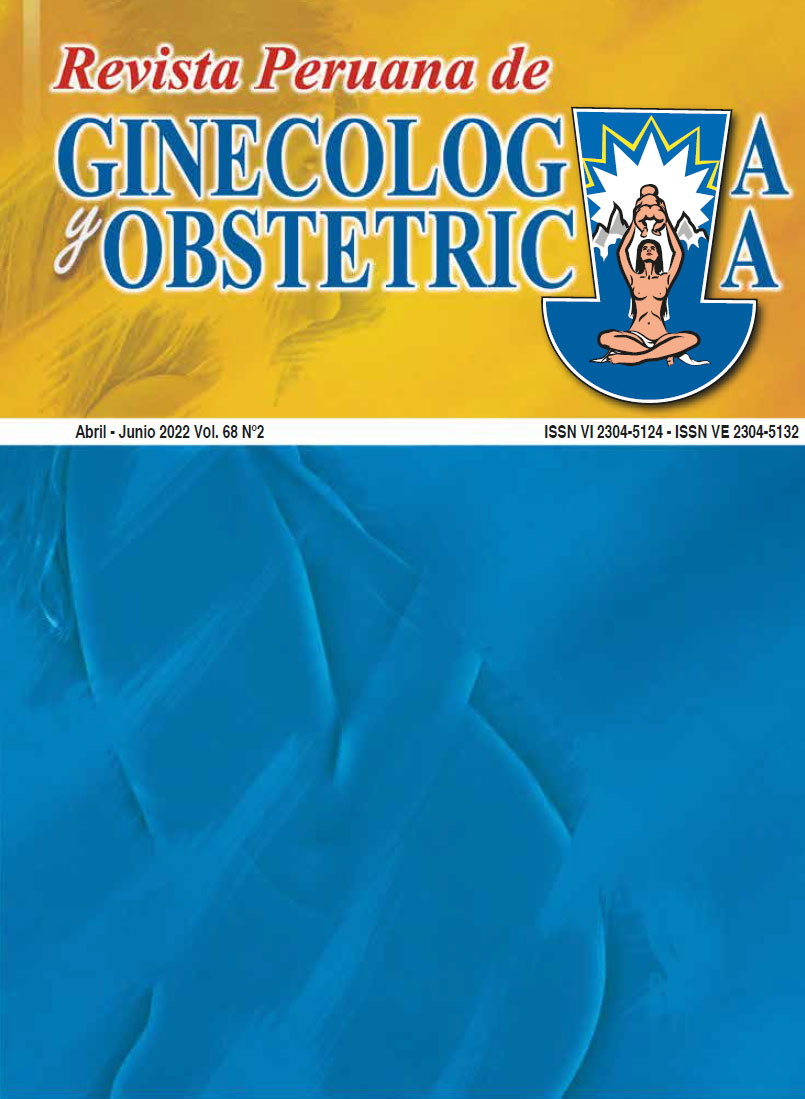Red cell distribution width in the second trimester of pregnancy as a predictor of preeclampsia
DOI:
https://doi.org/10.31403/rpgo.v68i2409Keywords:
Índices de eritrocitos, Amplitud de la distribución eritrocitaria, Preeclampsia, Predicción, EmbarazoAbstract
Objective: To establish the usefulness of red cell distribution width in the second trimester of pregnancy as a predictor of the development of preeclampsia. Design: Case-control study. Institution: Hospital Central "Dr. Urquinaona", Maracaibo, Venezuela. Participants: Pregnant women between 17 and 20 weeks who attended prenatal consultation and were followed up until to term. Methods: Blood samples were taken and followed up until delivery to establish if they developed preeclampsia. Main outcome measures: General characteristics, values of red cell distribution width and prognostic efficacy. Results: Cases were 41 pregnant women who developed preeclampsia (group A) and 463 pregnant women were considered as controls (group B). No statistically significant differences were found in maternal age, gestational age, and systolic and diastolic blood pressure at the time of ultrasound (p = ns). Gestational age at the time of diagnosis of preeclampsia in group A was 35.0 +/- 3.2 weeks. Significant differences were found in red cell distribution width values between patients in group A (14.5 +/- 2.3%) and patients in group B (13.8 +/- 1.8%; p = 0.039). A cut-off value of 14% presented a value under the curve of 0.576 with sensitivity of 63.4%, specificity of 49.7%, positive predictive value of 10.0% and negative predictive value of 93.9%. Conclusion: The values of red cell distribution width values in the second trimester are not useful in the prediction of preeclampsia.
Downloads
Downloads
Published
Versions
- 2022-07-06 (2)
- 2022-07-06 (1)
How to Cite
Issue
Section
License
Copyright (c) 2022 Eduardo Reyna-Villasmil, Duly Torres-Cepeda, Jorly Mejía-Montilla, Nadia Reyna-Villasmil, Martha Rondón-Tapia, Andreina Fernández-Ramírez

This work is licensed under a Creative Commons Attribution 4.0 International License.
Esta revista provee acceso libre inmediato a su contenido bajo el principio de que hacer disponible gratuitamente la investigación al publico, lo cual fomenta un mayor intercambio de conocimiento global.















